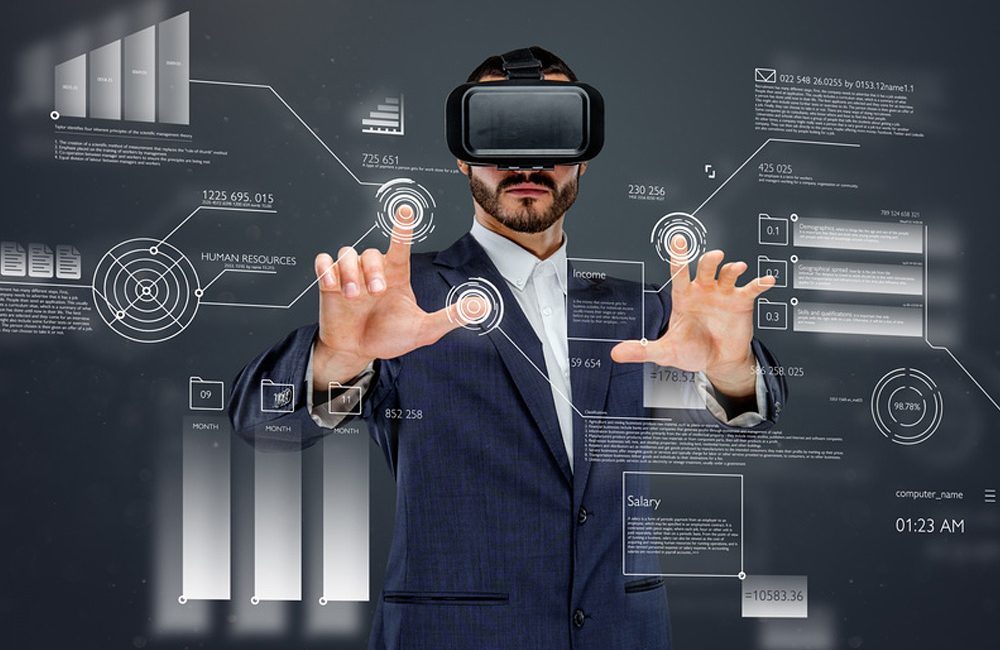Augmented Reality in Maintenance and Remote Assistance
Technology November 26, 2020, Comments Off
Make no mistake, the fourth industrial revolution is upon us. While conservative industries are still observing the action from the sidelines, leading 4.0 industries are reaping the benefits of their investments in VR-enhanced maintenance, repair, and operations practices.
Continue reading to learn more about how augmented reality is taking preventive, corrective, and predictive maintenance and remote assistance to the next level.
Augmented reality in maintenance
Maintenance plays a vital role in the industrial sector. Since it has a direct influence on performance, productivity and product quality (not to mention profit and reputation), maintenance is an area that is always being improved and perfected over time. And, rest assured, the current innovation in maintenance is augmented reality technology.
Augmented reality, in a nutshell, allows users to enhance their field of view with real-time superimposed digital information. But, more than that, it is a valuable solution for many of the challenges which surround industrial maintenance, repair, and operations.
Before we dig into practical applications, let us review some proven advantages of implementing a finely-tuned AR-enhanced MRO system:
General benefits of augmented reality maintenance
Don’t take our word for it. Controlled augmented reality case studies proved AR solutions to be indispensable in increasing the efficacy and cutting the error rates :
Boeing cut its wiring production time by 25% and reduced error rates effectively to zero. GE Aviation experiences an average of 8-12 % in efficiency improvement. GE Healthcare warehouse workers had a 46% increase in productivity using AR. GE Renewable Energy wiring technicians are yielding a 34% increase in productivity.
As they say, numbers don’t lie. Considering such attractive advantages and adding to the fact that large-scale factory breakdowns are often far more costly than maintaining a regular MRO program, more and more AR maintenance use cases are coming to life.
AR maintenance use cases
Industrial maintenance has humble origins. Back in the day machinery was slower, demand was milder, control systems were very simple and breakdowns were not as drastic. Fast-forward to the present day, and we have a whole different story.
Much has changed since the origins of the industrial revolution, with the more prominent developments emerging in the last decades. From physical documentation, we moved on to the desktop, then progressed to smart mobile devices and have now reached the hands-free wearable technology era.
AR-powered solutions for maintenance and repair operations:
Preventive Maintenance:
Operator assembly instructions
Service inspection instructions
Detailed instructions for unfamiliar procedures
Compliance checklist
Corrective Maintenance:
Service manual instructions
Remote assistance
Predictive Maintenance:
Performance panels
Real-time access to data: monitoring, control actions, disruptions, analytics
Even though the above-mentioned solutions have their unique value, augmented reality remote assistance is definitely worthy of a closer examination.
Augmented reality in remote assistance
Commonly referred to as the “see-what-I-see” remote collaboration, this solution is the new preferred way to have specialized expertise on-site anytime, anywhere. Whenever a new or complex problem arises, field service technicians can now connect with experts to get a faster diagnosis and solution, decreasing repair downtime, saving time and money.
Thanks to its real-time two-way audio and video capabilities, which allows annotations to be made and remain stable on the shared scene, the costly expenses of moving skilled workers from site to site are being drastically reduced. Learn how Coca-Cola is reducing costs, improving quality control, and increasing efficiency throughout its supply-chain by using augmented reality.
“We no longer need to fly in people from Germany – where our main equipment suppliers are based – to troubleshoot our machines. Now they can virtually see what we are seeing, instantaneously, and help diagnose and solve issues without stepping foot in a plant. This allows us to operate ‘virtually’, unencumbered by time or distance.”
Helen Davis, VP of the supply chain, Coca-Cola Refreshments
Persistent AR experiences and worker collaboration
Collaboration among workers is a key driver for including AR technology into enterprises’ systems and processes. The display of real-time (or saved) 3D annotations on environments and objects help teams solve problems efficiently and with no extra relocation costs.
Features like Scene Recognition, Instant Tracking and, Persistent Instant Targets facilitate the sharing of AR experiences among professionals. While Scene Recognition helps workers overcome the challenge of tracking industrial sites and machines, Instant Tracking allows remote experts to guide onsite workers on the fly. The ability to ‘save and load’ AR experiences with Persistent Instant Targets allow staff to leave important messages directly on the machinery itself for the next shift to be aware of.
Combined, these three features bring AR collaboration among different users, devices, and operating systems one step ahead.
Maintenance is only one of the many use cases of augmented reality and Wikitude is proud to provide the technology which enables so many innovative and positive solutions to come to life.
All things considered, implementing an augmented reality maintenance program has a vast array of advantages. If you are interested in incorporating augmented reality solutions to support your specific needs, we encourage you to explore the features of our powerful SDK.